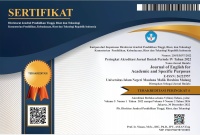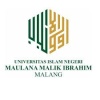Interlanguage Analysis: How morpheme order studies do not necessarily apply to every situation
Abstract
Much research on language acquisition, from nativist to interactionist, describes Morpheme Order Studies as a major development in second language acquisition. This paper intended to discuss how spoken data from a Japanese student could be used to indicate the level of acquisition of English morphemes attained via the processability theory but actually determined that an order of acquisition does not necessarily apply. Results showed that the informant varied in success in supplying correct morphemes in obligatory contexts, that her first language did not interfere with her second language acquisition and the accuracy of using morpheme order sequence to determine the level of acquisition breaks down because learner’s developmental sequence is unpredictable.
Full Text:
PDFReferences
Disbrow-Chen, R. L. (2004). Morpheme acquisition in relation to task variation: a case study of a beginning-level ESL learner, retrieved 3 Sept 2009, http://www.labschool.pdx.edu/research/current/Disbrow-Chen%20thesis.pdf.
Ellis, R. (1994). The study of second language acquisition. Oxford: Oxford University Press.
Gass, S. & Selinker, L. (2001). Second language acquisition: an introductory course. New York: Routledge/Taylor and Francis Group.
Hawkins, R. & Liszka, S. (2003). Locating the source of defective past tense marking in advanced L2 English speakers. In Hout, R.V., Hulk, A., Kuiken, F., Towell, R. (eds), The lexicon-syntax interface in second language acquisition. Amsterdam: John Benjamin B.V.
Lightbown & Spada. (2006). How languages are learned. Oxford: Oxford University Press.
Klein, W. (1946) Second language acquisition. UK: Cambridge University Press.
Pallotti, G. (2007). An operational definition of the Emergence Criterion. Applied Lingustics. 28(3), 361-382. Retrieved April 20, 2009, from EBSCOhost database.
Peker, H., & Toprak Çelen, E. (2020). A critical review on the components of processability theory: identifying the limitations. ELT Research Journal, 71–89. https://dergipark.org.tr/tr/download/article-file/1131078
Pienemann, M. (1998). Language processing and second language acquisition: Processability Theory. Amsterdam: John Benjamins.
Pienemann, M., & Lenzing, A. (2015). Processability Theory. In B. VanPatten & J. Williams (Eds.), Theories in second language acquisition: An introduction (pp.159-179) New York, NY: Routledge.
Sakai, H. (2008). An analysis of Japanese university students’ oral performance in English using processability theory. System, 36 (4), 534-549. Retrieved March 20, 2009, from http://www.system/sakai.japan.769975.com.
Selinger, H.W. & Shohamy, E. (1989). Second language research methods. Oxford: Oxford University Press.
Widyastuti, I. (2015). A Processability Theory Study: Past -ed Acquisition in University Learners in Indonesia. Ahmad Dahlan Journal of English Studies (ADJES), 2 (3), (pp. 78-84). Retrieved August 23rd, 2022 from http://journal.uad.ac.id/index.php/ADJES/article/view/2024
DOI: https://doi.org/10.18860/jeasp.v5i2.18997
Refbacks
- There are currently no refbacks.

This work is licensed under a Creative Commons Attribution-ShareAlike 4.0 International License.






Editorial Office:
Pusat Pengembangan Bahasa
Program Khusus Pengembangan Bahasa Inggris (PKPBI)
Universitas Islam Negeri Maulana Malik Ibrahim Malang
Gedung C lantai 1
Jl. Gajayana No 50 Kota Malang, Jawa Timur, Indonesia
Kode Pos 65144, Telp/Fax : (0341) 570872
Email: jeasp@uin-malang.ac.id
JEASP : Journal of English for Academic and Specific Purposes is licensed under a Creative Commons Attribution-ShareAlike 4.0 International












